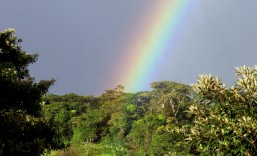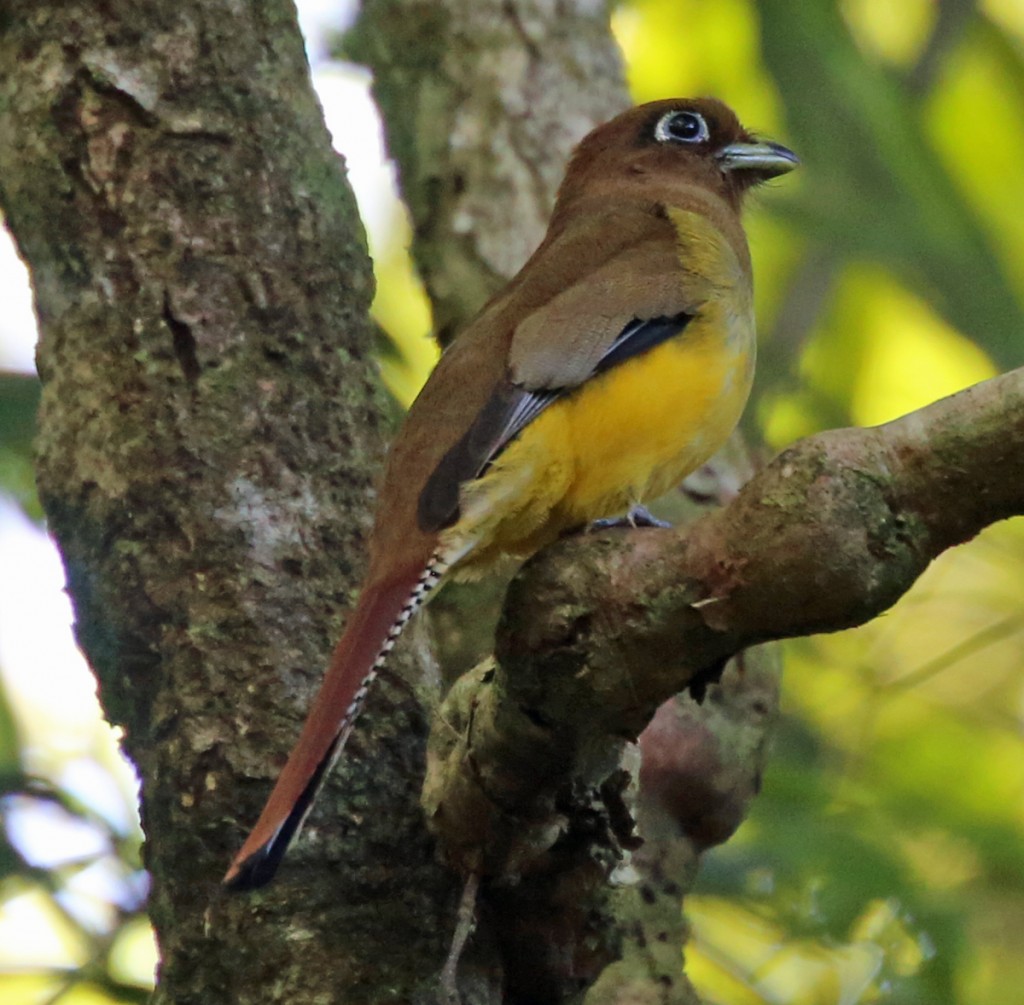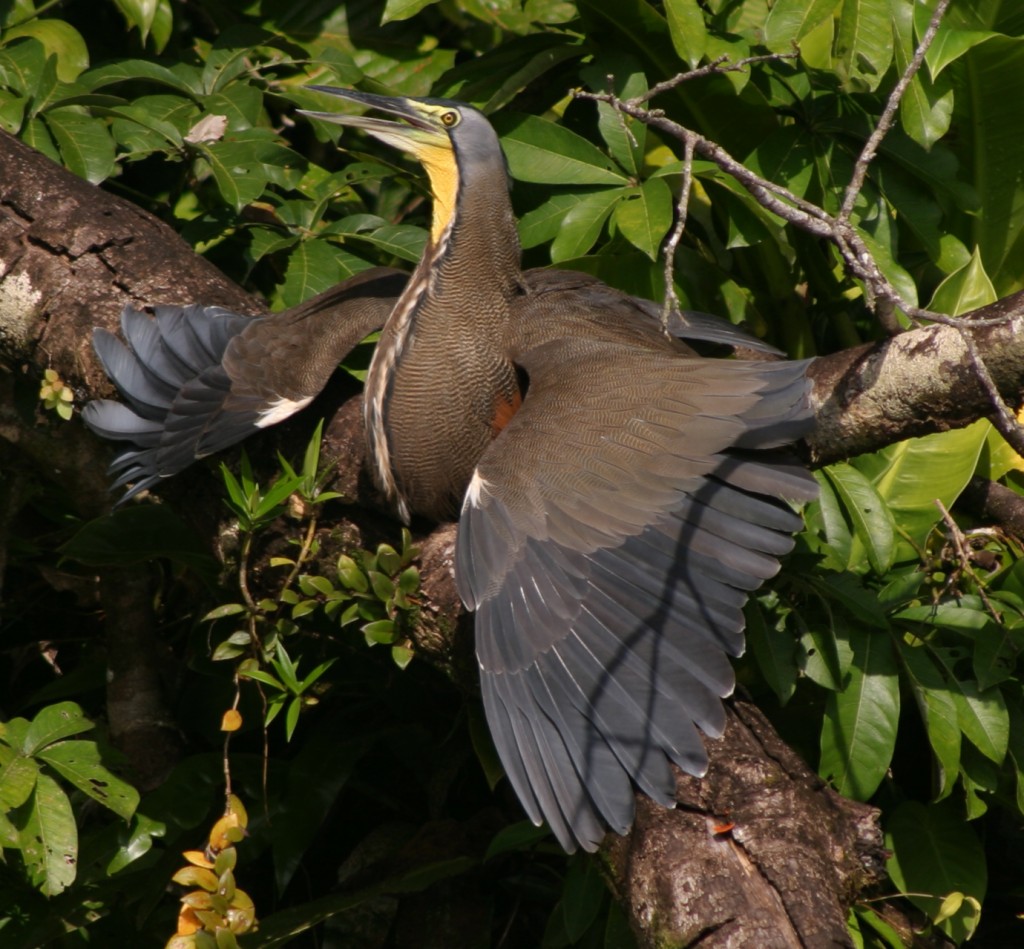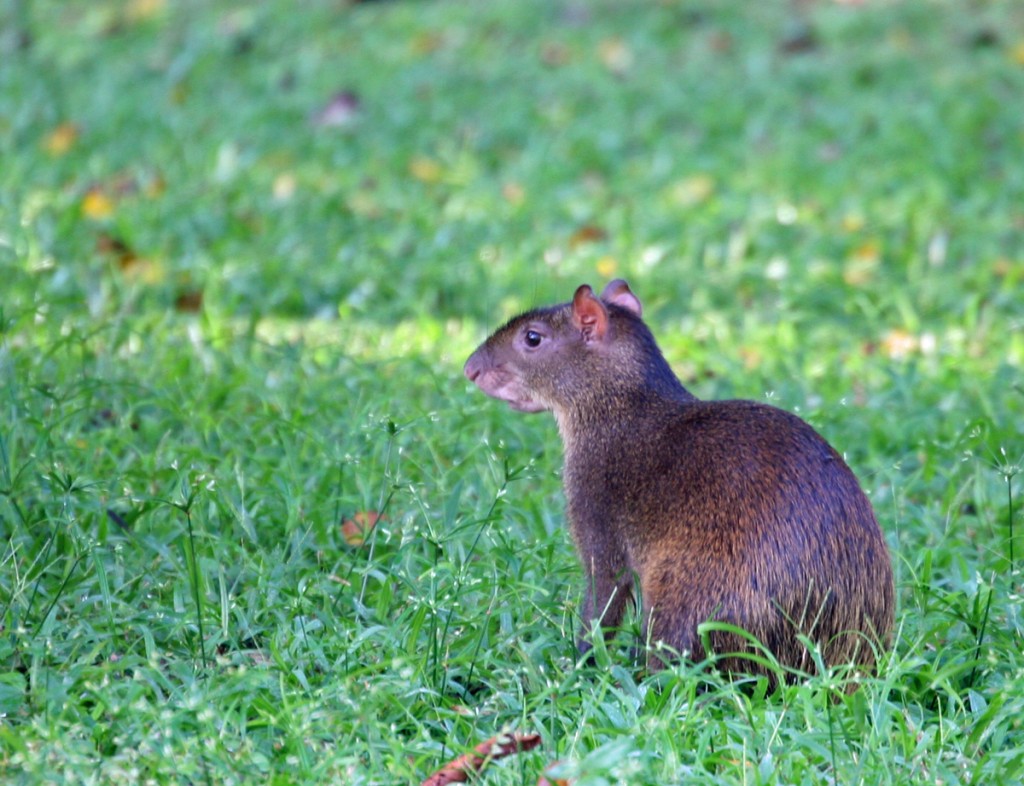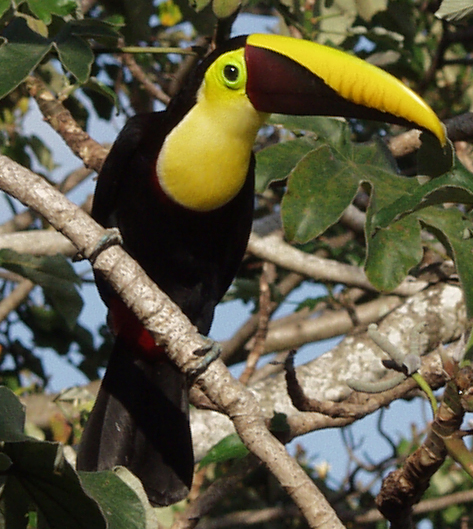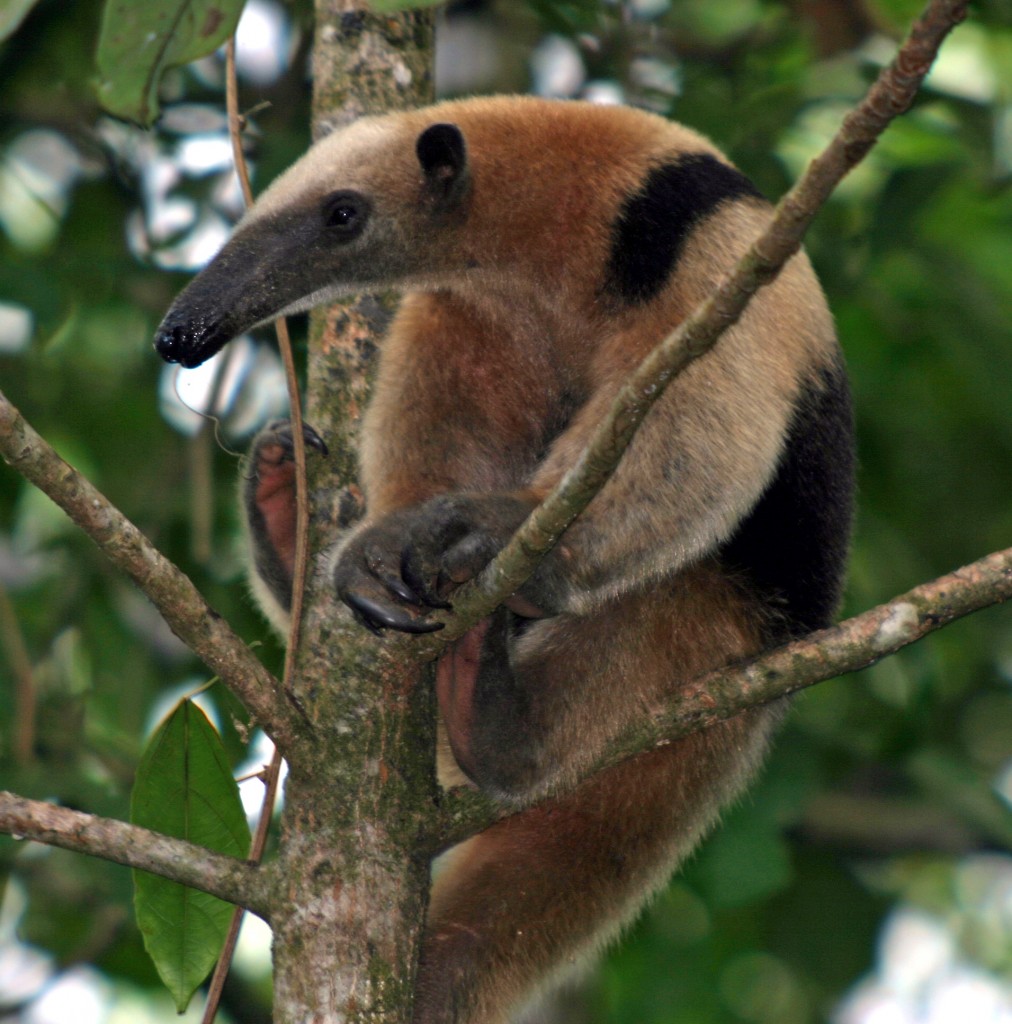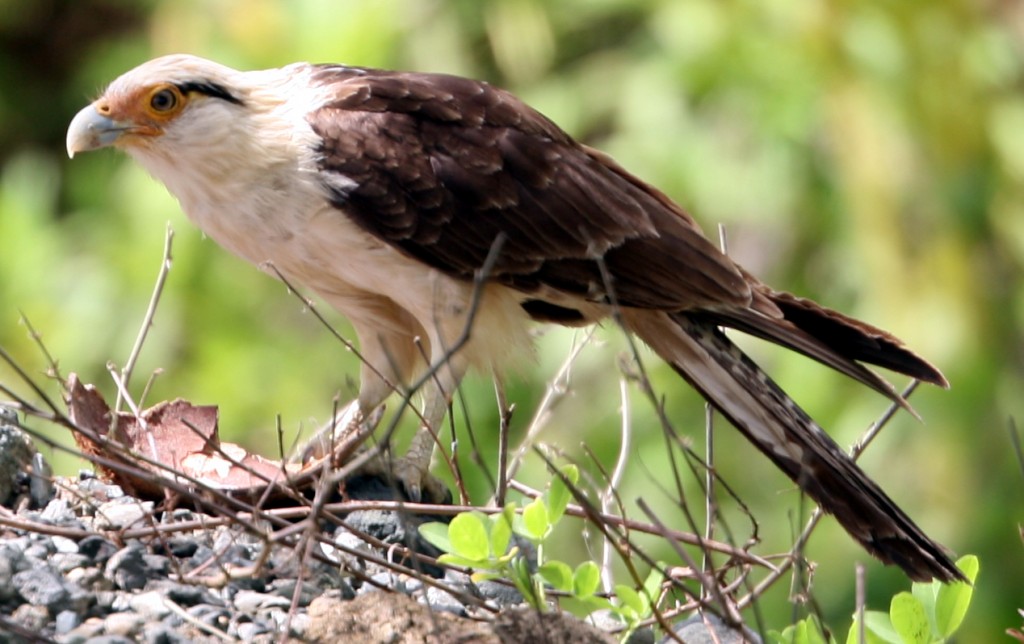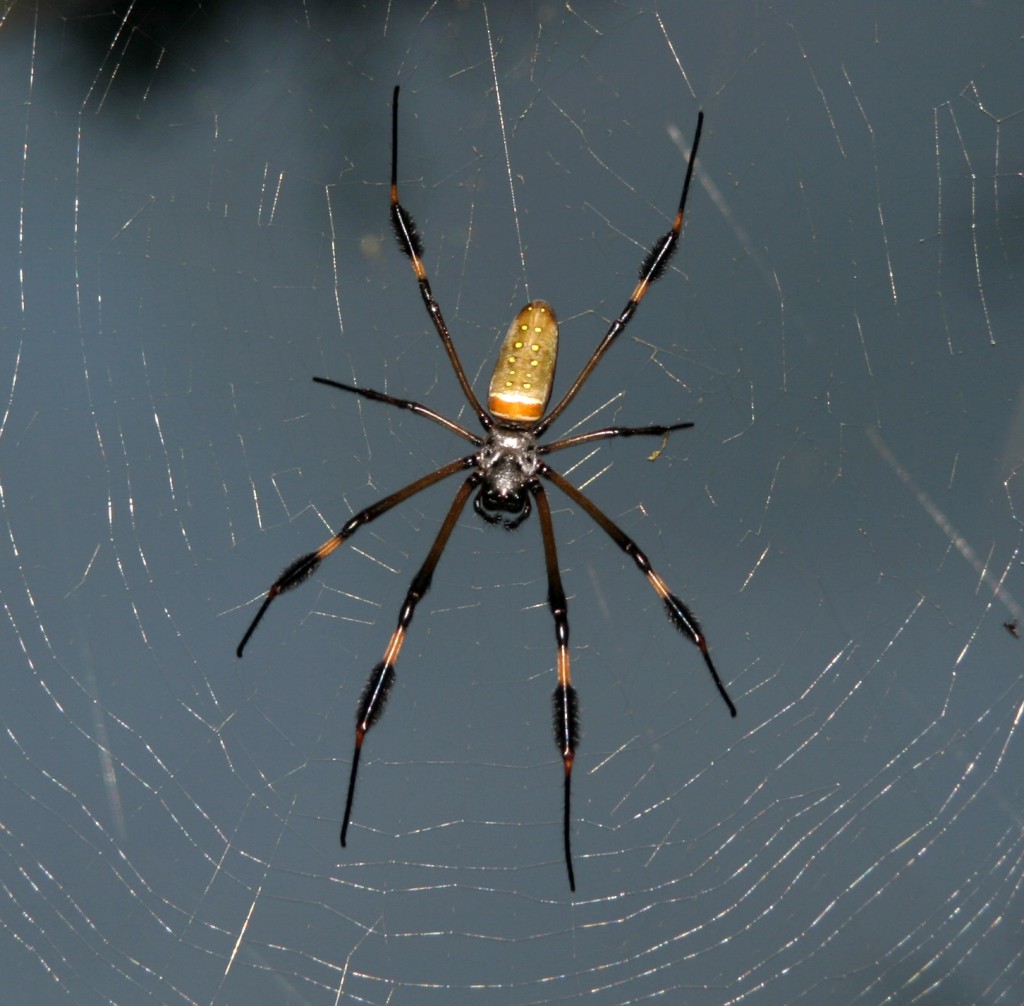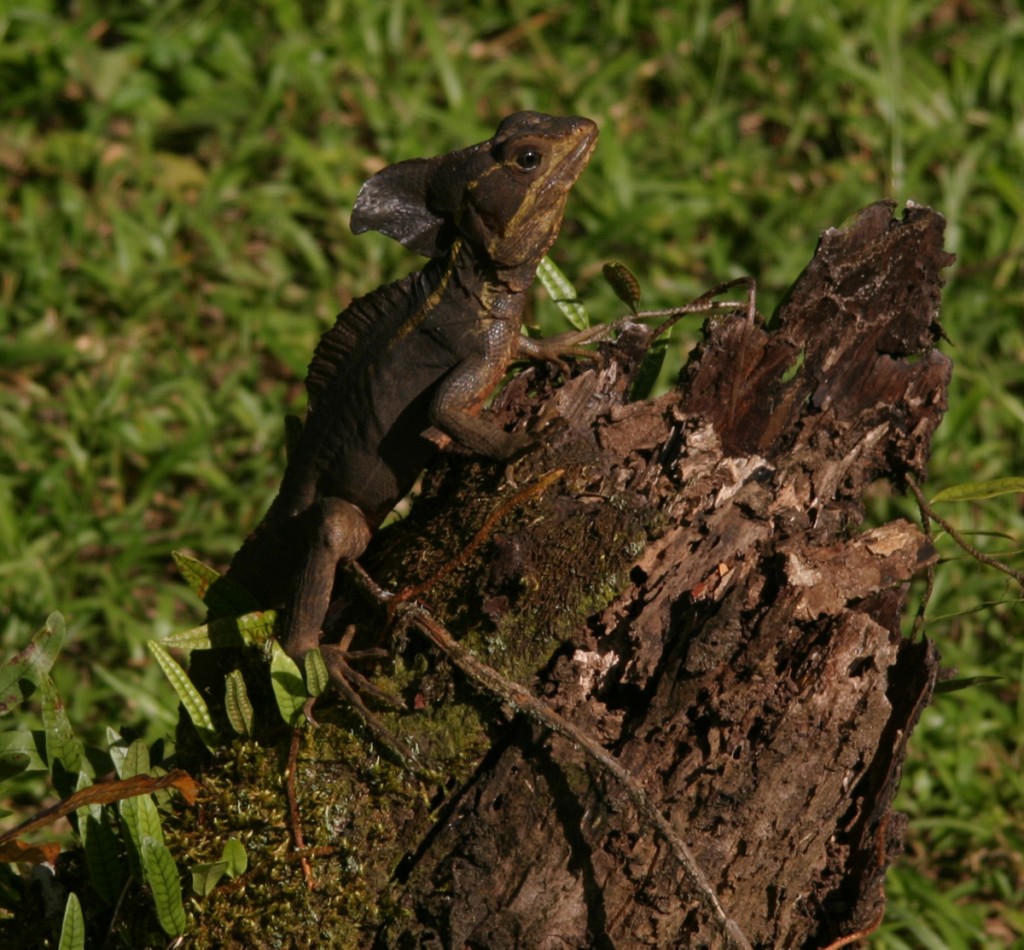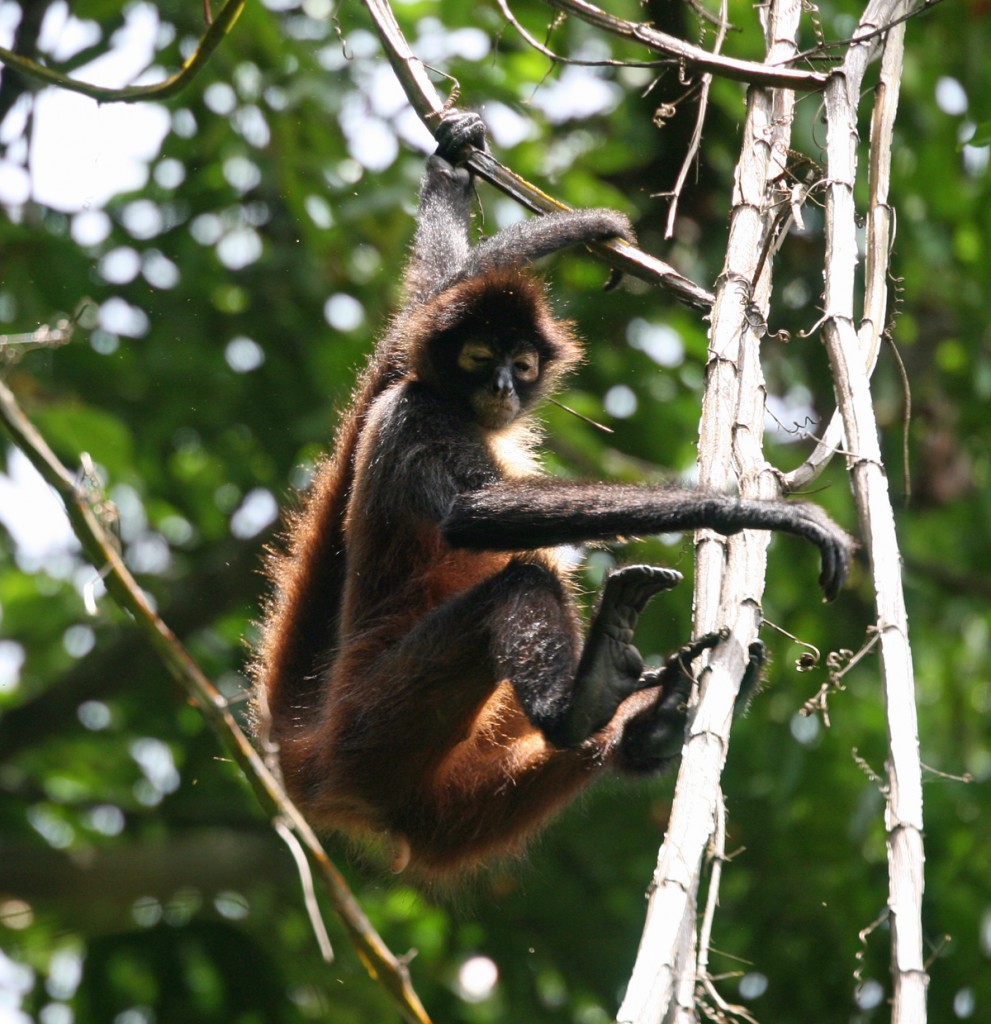
Central American Spider Monkeys (Ateles geoffroyi) are found mostly in Costa Rica’s protected areas of primary rain forest. Their arms are longer than their legs, and they have no thumbs on their hands, which makes it possible for them to brachiate, or swing branch to branch with only their arms. They have an incredibly strong prehensile tail with a palm-like pad on the end. When these primates maneuver through the forest canopy looking for ripe fruit, they often get all five limbs in action, and truly look like spiders in a web of branches.
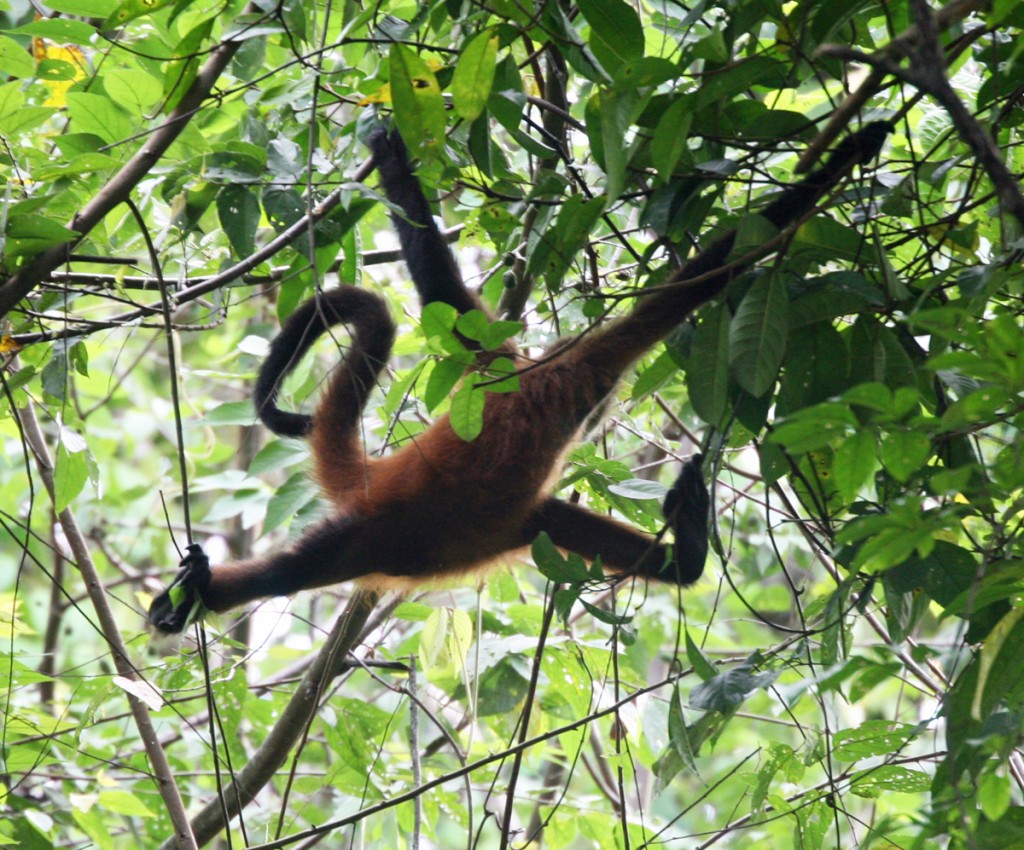
This Central American Spider Monkey demonstrates its full arachnid-like range, using arms, legs, and tail to travel through among the slender branches of the rainforest canopy.
All media is copyright costaricawildlife.net, 2013.
